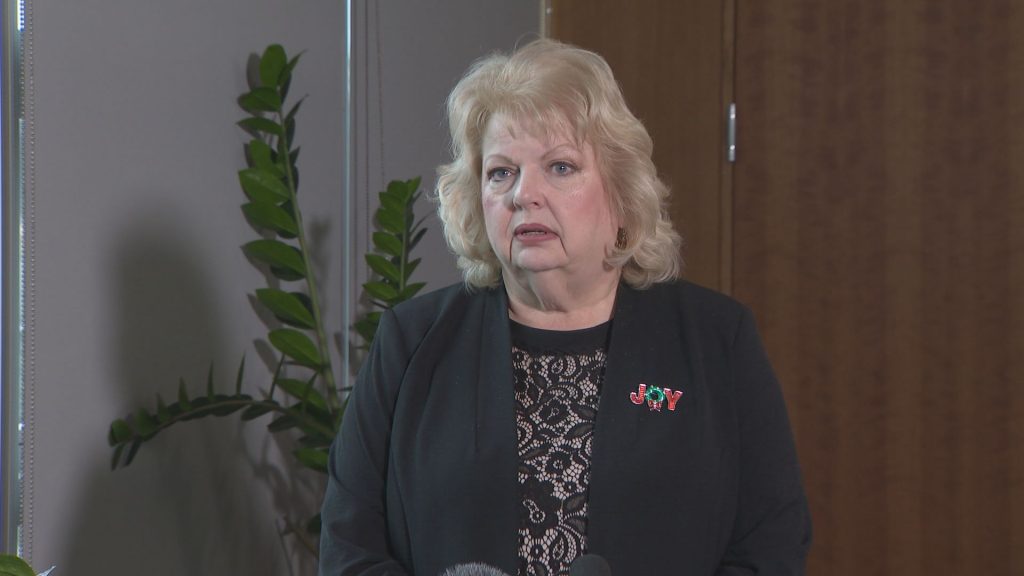B.C. on track for step 2 reopening as data shows near-zero cases possible by fall
Posted June 11, 2021 6:42 am.
Last Updated June 11, 2021 7:15 am.
VANCOUVER (NEWS 1130) – The latest provincial modelling suggests B.C. could see close to zero new daily COVID-19 cases by September if our interactions stay on the low side and vaccination rates continue to remain high.
But if our interactions are slightly higher and the second dose vaccination rate is lower, we could see 200 cases a day.
B.C.’s top doctor says either way, the modelling is good news as we’ve reached a point in the pandemic where a slight increase in cases is manageable.
“Over the next few weeks, we are likely to see more cases arise. But they’re not going to be widely transmitted in our communities the way that we have seen before,” said Provincial Health Office Dr. Bonnie Henry. “So we are confident now that with what we’re seeing, with the immunization and the protection that we have in our communities across the board, and with the public health measures that we know work, that we can manage a slight increase in cases as we move forward over the next few weeks.”
Looking ahead to restart plans for #BC, Dr. Henry says transmission rates are becoming more manageable, but cautions more cases will be recorded as more restrictions are lifted over the next few weeks. #bcpoli @NEWS1130 pic.twitter.com/ZttGGeF6Su
— Marcella Bernardo (@MBernardoNews) June 10, 2021
However, Henry stresses all this depends on everyone, collectively.
“It depends on us taking our time, doing things slowly and surely, and making sure that we are testing, tracing, and tracking those basic public health functions that we know work to stop transmission and to stop clusters when they occur,” she said.
Henry points to March when we saw “rapid exponential growth,” saying back then, B.C. did not have enough people protected by vaccines to slow transmission rates, and people were increasing contacts.
As of Thursday afternoon, nearly 75 per cent of eligible adults in B.C. had received at least a first dose of vaccine, while 72.8 per cent of people 12 and older had gotten at least a shot.
Related articles:
-
Timeline: B.C.’s restart plan
-
COVID-19: B.C. touts 325,000 vaccine doses administered per week, cases steady
Henry says it’s key we continue to keep an eye on which strains are circulating, and how many are determined to be “variants of concern.”
“What we can see is that the variants of concern that have been identified are now the predominant strains that are circulating in people and being transmitted across the province. Even though the numbers are very small in some places, even in Vancouver Coastal, where it’s as high as 100 per cent of them are variants of concern, the same measures that we are taking to prevent transmission of any of the strains of the virus are working to prevent transmission and to reduce the numbers of people with this infection,” she explained.
The Delta strain is among the variants the province is keeping an eye on.
The variant of concern has one group calling on provinces to pump the breaks on their reopening plans. Zero COVID Canada is worried that is things loosen too fast before enough people are vaccinated, Delta will undo progress and cause a fourth wave.
Henry said the variant is transmitting in the province but only accounts for 4 per cent of cases.
Province readies for phase two of restart
Given the latest modelling, Henry says B.C. will be in a good position to move forward in its restart plan. The province is expected to enter phase two on Tuesday, June 15.
“For the first time in many months, our r-nought, our reproductive rate, which tells us how many people each new case is spreading to, is well below one in all health regions. As well, community transmission, hospitalizations, and deaths are all declining as immunizations go up,” the PHO explained. “The key to our success is everybody. It’s all of you. First to lessen the spread and then to get immunized.”
Phase two of the restart plan includes allowances for gatherings of up to 50 people for seated, indoor, organized events with safety protocols, as well as gatherings with a maximum of 50 people outdoors for social gatherings. Travel within the province is also allowed in step two.
Henry says more details will be made available next week.
“So far, the data that we have is supporting that we can go there (phase two). I’m confident that we can take this step, as long as we increase our contacts in a slow and measured way.”
She adds transition will be gradual.
“We all have our own reasons to go slower in some places. We need to respect both communities’, and individuals’, and workplaces’ risks and needs and desires to progress at a slower level, given their own risk tolerance and what’s happening to them — personally or in their community,” Henry said.










